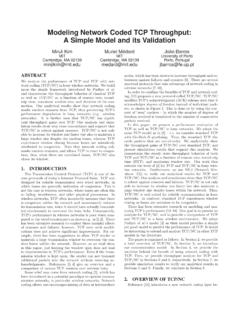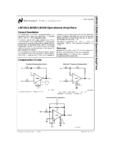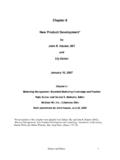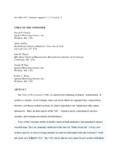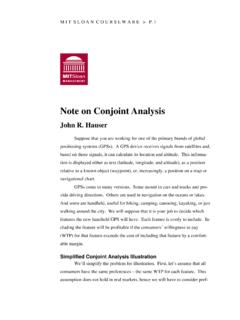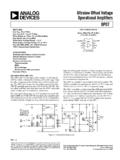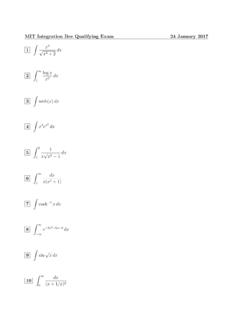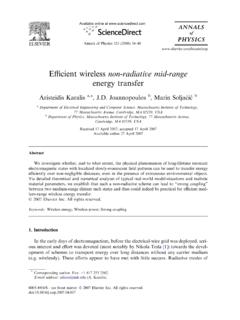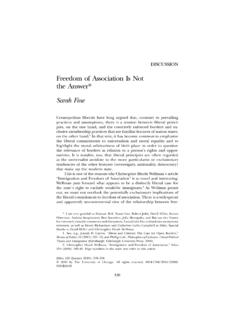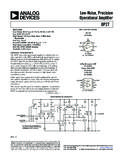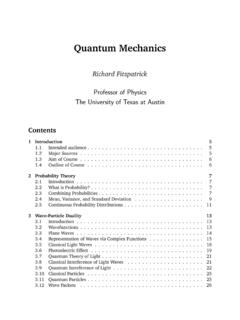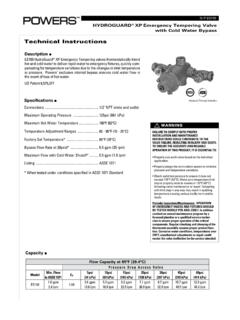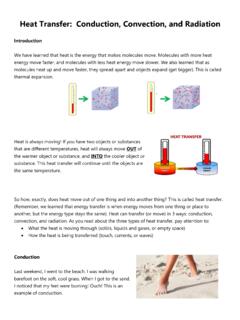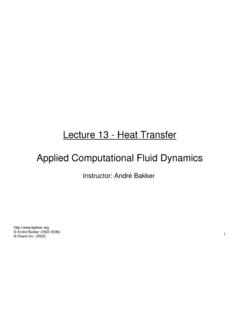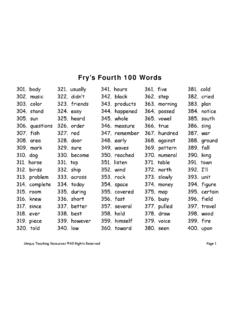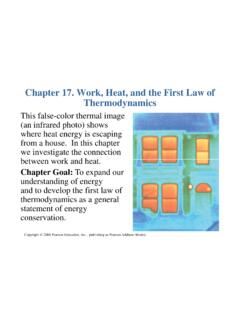Transcription of Cold spray coating: review of material systems and future ...
1 REVIEWCold spray coating: review of material systemsand future perspectivesA. Moridi1,2, S. M. Hassani-Gangaraj1,2, M. Guagliano*1and M. Dao2 cold gas dynamic spray or simply cold spray (CS) is a process in which solid powders areaccelerated in a de Laval nozzle toward a substrate. If the impact velocity exceeds a thresholdvalue, particles endure plastic deformation and adhere to the surface. Different materials such asmetals, ceramics, composites and polymers can be deposited using CS, creating a wealth ofinteresting opportunities towards harvesting particular properties. CS is a novel and promisingtechnology to obtain surface coating, offering several technological advantages over thermalspray since it utilizes kinetic rather than thermal energy for deposition. As a result, tensile residualstresses, oxidation and undesired chemical reactions can be avoided.
2 Development of newmaterial systems with enhanced properties covering a wide range of required functionalities ofsurfaces and interfaces, from internal combustion engines to biotechnology, brought forth newopportunities to the cold spraying with a rich variety of material combinations. As applicationsmultiply, the total number of studies on this subject is expanding rapidly and it is worthsummarizing the current state of knowledge. This review covers different material systems thathave been studied up to now with an emphasis on potential innovative applications. This includesmetallic, ceramic and metal matrix composite (MMC) coatings and their applications. Polymer(both as substrate and coating) and metal embedment in the polymer are also covered. CS hasemerged as a promising process to deposit nanostructured materials without significantly alteringtheir microstructure whereas many traditional consolidation processes do.
3 Relevant materialsystems containing nanostructured powders are also considered. A critical discussion on thefuture of this technology is provided at the final part of the paper focusing on the microstructuralbonding mechanisms for those relatively less explored material systems . These include MMCsinvolving more than one constituent, ceramics, polymers and nanostructured powders. Futureinvestigations are suggested especially to quantitatively link the process parameters and thebehaviour of the material systems of interest during : cold spray , Metal matrix composite, Polymer, Ceramic, Nanostructured PowderThis paper is part of a special issue on cold spray technologyIntroductionCold spray technology: basic principlesCS is a process in which solid powder particles areaccelerated over the sonic velocity through a de Lavalnozzle with a convergent-divergent geometry.
4 Particleshave ballistic impingement on a suitable substrate atspeeds ranging between 300 and 1200 m as well as the characteristics of feedstockpowders is fundamental to determine the final temperatureand velocity of sprayed particles which is strictly related tocoating microstructure, physical and mechanical proper-ties. The temperature of the gas stream is always below theparticle material s melting point. Therefore, CS could beeffectively defined as a solid state deposition process. Asthe coating deposition is accomplished at the solid state, ithas characteristics that are quite unique compared to othertraditional thermal spray are currently two main types of CS systems :high pressure cold spray (HPCS) in which particles areinjected prior to the spray nozzle throat from a highpressure gas supply;1and low pressure cold spray (LPCS) in which powders are injected in the divergingsection of the spray nozzle from a low pressure systems are typically much smaller,portable, and are limited to 300 600 m s21particlevelocities.
5 They are used in the application of lighter1 Department of Mechanical Engineering, Politecnico di Milano, Via G. LaMasa,1,20156, Milan, Italy2 Department of material Science and Engineering, MassachusettsInstitute of Technology, 02139, Cambridge, MA, USA*Corresponding author, email 2014 Institute of Materials, Minerals and MiningPublished by Maney on behalf of the InstituteReceived 31 July 2013; accepted 5 March 2014 DOI Engineering2014 VOL36NO6369materials and they generally utilise readily available airor nitrogen as propellant gases. High pressure systemsinstead, use higher density particles. They utilise higherpressure gases, are stationary and typically generateparticle velocities of 800 1400 m s21. Lower weightgases, such as nitrogen or helium, are the preferredpropellant gases for aforementioned systems have some upstream (high pressure) powder feeding CSsystems, in order to avoid powder back flow, a highpressure powder feeder running at a pressure higherthan that in the main gas stream has to be used.
6 Thehigh pressure powder feeders are usually very big andexpensive. Another major difficulty is related to nozzleclogging. This is more severe when the particle velocityand temperature are increased. To overcome theproblem, a second particle population with either alarger average particle diameter or higher yield strength(hardness/elastic modulus) should be mixed with the firstparticle disadvantage of HPCS system is the severe wear of nozzle throat due to particleerosion, which affects the nozzle operation and leads tolarge variations in operating conditions and depositquality. This becomes worse when hard particles arebeing sprayed. On the other hand, the downstream (lowpressure) powder feeding CS systems has simplerequipment. However, the nozzle design in this case isrestricted to relatively low exit Mach number (usually,3).
7 The inlet pressure is also restricted (normally,1 MPa) otherwise the atmospheric pressure will nolonger be able to supply powders into the nozzle. As aresult, only relatively low particle velocities can bereached through the downstream powder the development of the CS process, a number ofstudies were conducted to introduce the technology andits basic principles4 6and consequently potential appli-cations of CS in different fields were 10 Morerecently, some variations have been made to the CStechnology. In this part we will also introduce differentvariants of the standard apparatus of first method is called kinetic metallisation (KM),which is also a solid state is a CS variantthat uses a convergent barrel nozzle under choked flowconditions to achieve an exit gas velocity of Mach 1,with a slight divergence to compensate for frictioneffects.
8 Most other CS systems (including low pressurecold spray ) use a de Laval nozzle (convergent divergentnozzle) to accelerate the process gas to variation to CS set up is called pulsed gasdynamic spraying (PGDS).12 This process heats up theparticles to an intermediate temperature (still belowmelting temperature) which is expected to be higher thantemperatures experienced in the CS process. Increasingthe temperature will result in a decrease of the criticalvelocity which is of technological value. In addition, itleads to a higher level of plastic deformation whilemaintaining the same impact velocity. This process hasalso a discontinuous nature which exploits non-station-ary pressure waves to generate simultaneously higherpressure and temperature than in CS process (where acontinuous, stationary flow exists.)
9 Another variation to CS is called vacuum cold spray (VCS). In this process the specimen is placed in avacuum tank with a pressure that is substantially less thanthe atmospheric pressure. The low pressure environmentis provided by a vacuum tank coupled to a vacuum vacuum tank allows for gas recovery and for powderoverspray is worth noting that a similardesign has been also disclosed which is called aerosoldeposition method (ADM). In this process, nanoparticlesare sprayed in a vacuum chamber using a propellant gasflow of helium or air. In this method, the propellant gaspressure is also below atmospheric pressure and thevelocity reached is lower than that for CS. This processreduces the presence of the shockwave at the substrate orbow shock effect significantly, making it possible todeposit very small schematic of different CSsystems is shown in Fig.
10 Main and more applicable categories of CStechnology have been described. Nevertheless introdu-cing all the patented CS apparatus is out of the scope ofthe present review and interested readers are referred tothe available review on this phenomena and bonding mechanismsParticles/substrate interaction during the CS depositionprocess and the resultant bonding, is of great impor-tance in CS technology because of the effect on coatingcharacteristics. Experimental studies and computationalmodelings have been performed to have a betterunderstanding of the bonding process during revealed that adhesion only occurs when thepowder particles exceed a critical impact velocity whichis specific to the spray predominantbonding mechanism in CS is attributed to adiabaticshear instability that occurs at the particle substrateinterface at or beyond the critical velocity.
